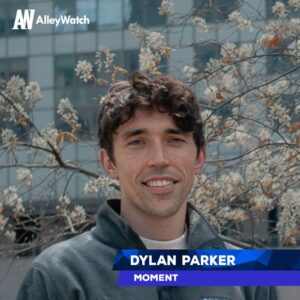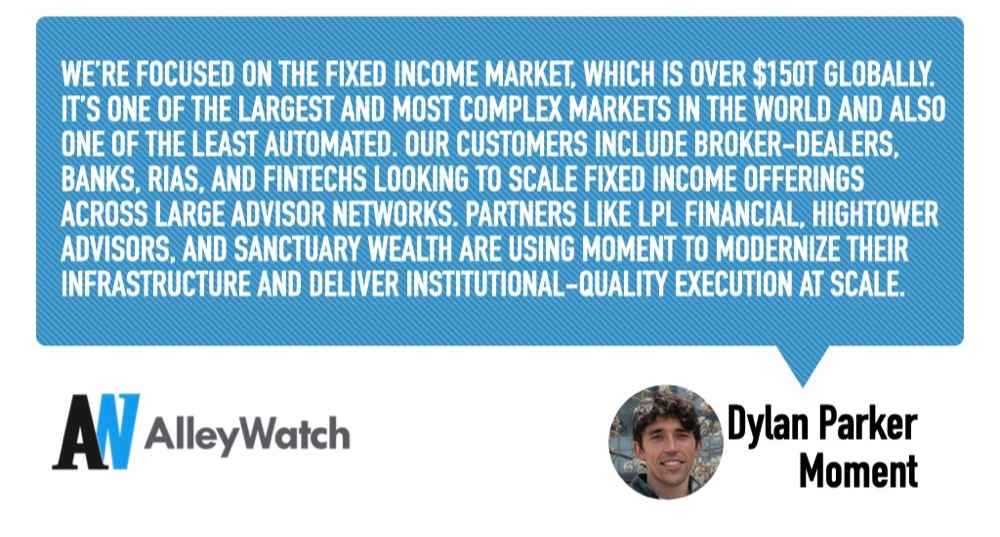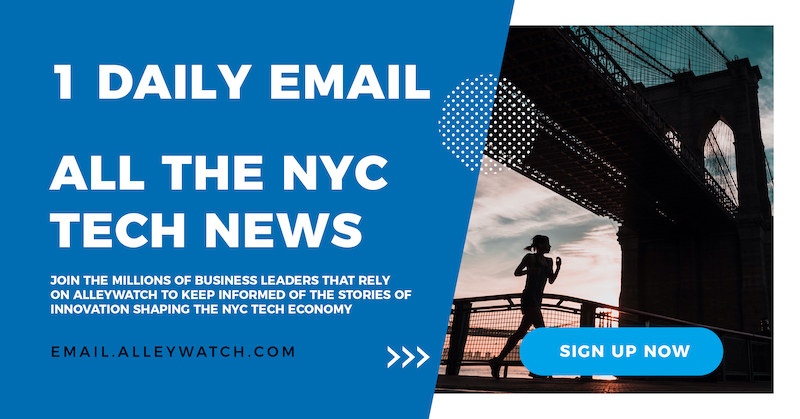The fixed income market represents one of finance’s greatest paradoxes: despite being worth over $150T globally, most trading workflows remain surprisingly manual and fragmented. Portfolio managers still coordinate through sprawling spreadsheets, traders operate across disconnected systems, and compliance monitoring happens after the fact rather than in real-time. Moment addresses these inefficiencies by building what they call the first operating system for fixed income – a unified platform that replaces the typical maze of separate tools for trading, portfolio management, and compliance with one automated system. The company’s founding team brings deep domain expertise from building automated credit desks at Citadel Securities and Jane Street, where they witnessed the stark contrast between cutting-edge trading technology and the outdated workflows still prevalent across most financial institutions. With partnerships spanning from LPL Financial’s $2T in assets under management to emerging fintechs like Public and Altruist, Moment processes over 3M orders while maintaining sub-second execution times and enabling clients to manage portfolios across hundreds of thousands of accounts simultaneously.
AlleyWatch sat down with Moment CEO and Cofounder Dylan Parker to learn more about the business, its future plans, recent funding round, and much, much more…
Who were your investors and how much did you raise?
We raised $36M in Series B funding. The round was led by Index Ventures, with participation from Andreessen Horowitz, Lightspeed Venture Partners, Venrock, Neo, and Contrary Capital. This brings our total funding to $56M to date.
Tell us about the product or service that Moment offers.
Moment is building the first operating system for fixed income. Our platform automates trading, portfolio management, compliance, and reporting, all in one place. It’s designed for financial institutions that want to move faster, scale smarter, and eliminate the manual, error-prone workflows that have historically defined fixed income.
What inspired the start of Moment?
 We started Moment after spending years at Citadel Securities and Jane Street. We saw firsthand how the most advanced trading firms were operating and how far behind the rest of the market was. Even at massive institutions, people were still juggling spreadsheets, chat threads, and phone calls to get trades done. We knew the technology existed to change that and we believed that building a unified, automated platform could unlock massive gains in efficiency, transparency, and access.
We started Moment after spending years at Citadel Securities and Jane Street. We saw firsthand how the most advanced trading firms were operating and how far behind the rest of the market was. Even at massive institutions, people were still juggling spreadsheets, chat threads, and phone calls to get trades done. We knew the technology existed to change that and we believed that building a unified, automated platform could unlock massive gains in efficiency, transparency, and access.
How is Moment different?
Most legacy systems are built around disconnected tools, one for trading, another for portfolio management, another for compliance. Moment replaces all of that with a single, unified platform, with deep automation layered across every step. A trade can be executed, allocated, booked, and compliance-checked in seconds. What used to take a team and a week, clients are now doing in minutes: generating portfolios from emails, turning PDFs into proposals, and managing thousands of accounts with real-time oversight.
What market does Moment target and how big is it?
We’re focused on the fixed income market, which is over $150T globally. It’s one of the largest and most complex markets in the world and also one of the least automated. Our customers include broker-dealers, banks, RIAs, and fintechs looking to scale fixed income offerings across large advisor networks. Partners like LPL Financial, Hightower Advisors, and Sanctuary Wealth are using Moment to modernize their infrastructure and deliver institutional-quality execution at scale.

What’s your business model?
It’s a pretty standard SaaS / usage-based model.
How are you preparing for a potential economic slowdown?
In many ways, Moment becomes more valuable during slowdowns. Institutions are under pressure to do more with less: automate workflows, reduce costs, and eliminate inefficiencies. Our platform is built to help them scale without scaling headcount and be profitable across cycles. In addition, our investor base, strong customer pipeline, and measured growth approach puts us in a solid position no matter what the broader market looks like.
What was the funding process like?
We’ve had fixed income on investors’ radar for a while, but it’s a complex space that requires real conviction and domain understanding. When we started conversations with Index Ventures, they immediately got it — not just the scale of the market, but the structural inefficiencies we’re solving. Jan Hammer, who led the round and previously backed Robinhood and Adyen, brought in Lee Olesky, cofounder of Tradeweb, to pressure-test what we were building. After digging in, he told Jan that we are the real deal.
That kind of validation, from people who helped shape how fixed income is traded today, meant a lot. It confirmed for us that we weren’t just building a better product, but a new category of infrastructure. From there, the round came together quickly, with continued support from a16z, Lightspeed, Venrock, and others.
What are the biggest challenges that you faced while raising capital?
Fixed income is a massive market, but it’s not always top-of-mind for generalist investors. Part of the challenge was helping people outside the space understand how outdated the workflows still are and how transformational a unified, automated system could be. Once investors dug in and saw the quality of the team, the traction we have made and the depth of the product, the opportunity became obvious. But it takes real domain understanding to get there.
What factors about your business led your investors to write the check?
It came down to team, timing, and conviction in the problem we’re solving. Our background building automated credit systems at Citadel and Jane Street showed investors our deep expertise in fixed income, we’d lived the complexity firsthand. The market itself is also at a turning point: rates are up, electronic trading is scaling fast, and institutions are actively looking to modernize. What really moved the needle was the depth of the product vision and the clarity around what we were building. This wasn’t a vague AI story or a trading tool, it was infrastructure. That became clear in diligence, and it gave investors confidence that we could lead this category.
What are the milestones you plan to achieve in the next six months?
We’re focused on deepening partnerships with firms like LPL Financial and Hightower Advisors, deploying with a few other landmark enterprise accounts, investing aggressively into our roadmap, and growing our team in New York.
What advice can you offer companies in New York that do not have a fresh injection of capital in the bank?
Focus on solving real problems that people are so painful they are willing to pay for, especially ones in big markets!
Where do you see the company going now over the near term?
Scaling to support more of the largest financial institutions in the U.S. and staying hyper focused on delivering truly transformational results for our customers.

